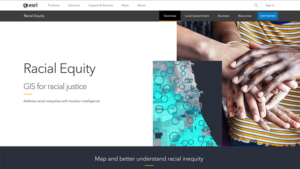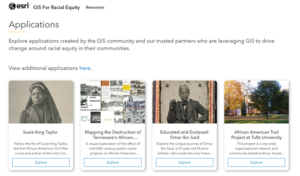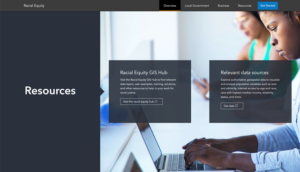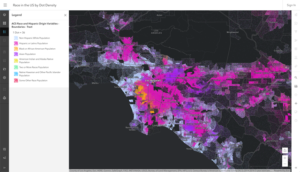PRESIDENT’S COLUMN
You Baby
By Amy Lobben

During our PhD programs, most of us are taught to be researchers. Some of us are formally taught to be teachers. But, few of us are taught Universal Design of Instruction. This approach represents a monumental shift from the traditional pedagogy: the lecture-driven course design. Yet, if we are going to achieve educational inclusion, our practices and institutions must shift out of comfortable models designed for the “typical” student and make way for a new approach – instructional design for a broad range of students.
Continue Reading.
ANNUAL MEETING
Countdown to the 2021 AAG Annual Meeting
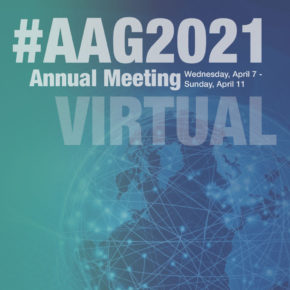 We are about 3 weeks away from the Annual Meeting! The completely virtual 2021 Annual Meeting, April 7-11, will feature 800+ paper sessions and panels on a wide range of topics as well as 27 poster sessions. Browse the Session Gallery to plan your attendance. For those who have not yet registered, you can do so here until the end of the event.
We are about 3 weeks away from the Annual Meeting! The completely virtual 2021 Annual Meeting, April 7-11, will feature 800+ paper sessions and panels on a wide range of topics as well as 27 poster sessions. Browse the Session Gallery to plan your attendance. For those who have not yet registered, you can do so here until the end of the event.
The 2021 AAG Meeting will feature several exciting sessions and plenaries, a highlight of which will be a presentation from 2020 Honorary Geographer Kathryn Sullivan. A new feature of the meeting this year are curated tracks, guided programs of Specialty and Affinity Group “must-see” sessions as highlighted by the groups. Browse the 15 curated tracks in the Session Gallery by selecting them from the “theme” drop-down menu.
To learn more about the meeting and plan for your participation, please visit the AAG Annual Meeting Website. We look forward to seeing you online soon.
Careers & Professional Development Sessions at the 2021 AAG Annual Meeting
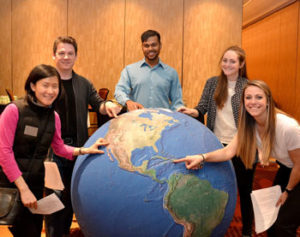
The AAG Jobs & Careers Center provides a central location for job seekers, students, and professionals to interact and to learn more about careers and professional development for geographers. Over 40 sessions will cover a range of topics from working as a geographer in the public, private, nonprofit, or academic sector to internships and work-based learning opportunities for geography students to computational skills in the geospatial services industry to diversity in academia and the workforce and more. Career Mentoring sessions will also be held twice daily April 7-April 10.
Learn about the Center’s offerings.
Helpful links for the 2021 AAG Annual Meeting
#AAG2021 is only a few weeks away and will be held online from April 7-11 in Pacific Time. Here are a few links for quick reference.
PUBLICATIONS
NEW Annals Alert: Articles with topics ranging from the racial politics of pesticides to natural gas production to urban parks
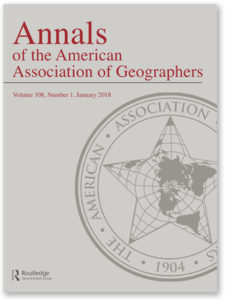 The most recent issue of the Annals of the AAG has been published online (Volume 111, Issue 2, March 2021) with 17 new articles on contemporary geographic research. Topics in this issue include geography department names; urban resilience; University of Michigan; the Jamaican coffee industry; geographically weighted regression; big data and mobility; Ellsworth Huntington; and Peirce F. Lewis. Locational areas of interest include the Great Lakes Region; California’s hardwood rangelands; Chad and Cameroon; Peru and Bolivia; and Eastern Montana. Authors are from a variety of research institutions including Mississippi State University; University of British Columbia; University of Oxford; and University of Exeter.
The most recent issue of the Annals of the AAG has been published online (Volume 111, Issue 2, March 2021) with 17 new articles on contemporary geographic research. Topics in this issue include geography department names; urban resilience; University of Michigan; the Jamaican coffee industry; geographically weighted regression; big data and mobility; Ellsworth Huntington; and Peirce F. Lewis. Locational areas of interest include the Great Lakes Region; California’s hardwood rangelands; Chad and Cameroon; Peru and Bolivia; and Eastern Montana. Authors are from a variety of research institutions including Mississippi State University; University of British Columbia; University of Oxford; and University of Exeter.
All AAG members have full online access to all issues of The Annals through the Members Only page. Each issue, the Editors choose one article to make freely available. In this issue you can read Changes in the Frequency of Cool Season Lake Effects within the North American Great Lakes Region by Andrew W. Ellis, Michael L. Marston, and Joseph B. Bahret for free for the next two months.
Questions about the Annals? Contact annals [at] aag [dot] org.
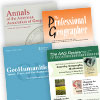 In addition to the most recently published journal, read the latest issue of the other AAG journals online:
In addition to the most recently published journal, read the latest issue of the other AAG journals online:
• Annals of the American Association of Geographers
• The Professional Geographer
• GeoHumanities
• The AAG Review of Books
New issue of African Geographical Review
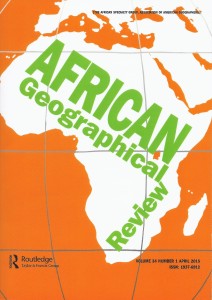
The latest issue of the journal of the Africa Specialty Group of the AAG, the African Geographical Review, has recently been published. Volume 40, Issue 1 is available online for subscribers and members of the Africa Specialty Group. The latest issue contains seven articles covering all sub-fields of geography, to enhance the standing of African regional geography, and to promote a better representation of African scholarship.
See more about the journal.
Call for Abstracts: Special Issue of ‘Annals’ on “Race, Nature, and the Environment”
 The 2023 Special Issue of the Annals invites new and emerging geographic scholarship situated at the crossroads of Race, Nature, and the Environment. In seeking contributions from across the discipline, we welcome submissions that advance critical geographic thinking about race and the environment from diverse perspectives and locations; that utilize a broad array of geographic data, theories, and methods; and that cultivate geographic insights that cut across time, place, and space. Abstracts of no more than 250 words should be submitted by e-mail to Jennifer Cassidento by March 31, 2021. The Editor (Katie Meehan) will consider all abstracts and then invite a selection to submit full papers for peer review by June 1, 2021.
The 2023 Special Issue of the Annals invites new and emerging geographic scholarship situated at the crossroads of Race, Nature, and the Environment. In seeking contributions from across the discipline, we welcome submissions that advance critical geographic thinking about race and the environment from diverse perspectives and locations; that utilize a broad array of geographic data, theories, and methods; and that cultivate geographic insights that cut across time, place, and space. Abstracts of no more than 250 words should be submitted by e-mail to Jennifer Cassidento by March 31, 2021. The Editor (Katie Meehan) will consider all abstracts and then invite a selection to submit full papers for peer review by June 1, 2021.
More information about the special issue.
ASSOCIATION NEWS
2021 AAG Election Results

The AAG members have spoken and the candidates running for various AAG governance positions have been selected. Congratulations to all who will be assuming their new roles on July 1st. We thank the hardworking officers whose terms will be concluding later this year.
See the results.
AAG Announces 2021 AAG Award Recipients

Congratulations to the recipients of 2021 AAG Awards including the Glenda Laws Award, the AAG Harold M. Rose Award for Anti-Racism Research and Practice, the AAG Harm de Blij Award for Excellence in Undergraduate Teaching, Wilbanks Prize for Transformational Research in Geography, and the AAG-Kauffman Awards for Best Paper and Best Student Paper in Geography & Entrepreneurship. The AAG will confer these awards at a future event to be determined, once the travel and in-person meeting restrictions have been lifted.
Learn more about the awardees.
AAG Announces 2021 Grant Recipients
The American Association of Geographers congratulates the individuals and entities named to receive an AAG Grant including the Anne U. White Fund, the Dissertation Research Grants, the Research Grants, and the AAG Darrel Hess Community College Geography Scholarships. The AAG will confer these awards at a future event to be determined, once the travel and in-person meeting restrictions have been lifted.
Read about the grantees.
AAG Announces 2020 Book Awards
 The AAG is pleased to announce the recipients of the three 2020 AAG Book Awards: the John Brinckerhoff Jackson Prize, the AAG Globe Book Award for Public Understanding of Geography, and the AAG Meridian Book Award for Outstanding Scholarly Work in Geography. The AAG Book Awards mark distinguished and outstanding works published by geography authors during the previous year, 2020. The AAG will confer these awards at a future event to be determined, once the travel and in-person meeting restrictions have been lifted.
The AAG is pleased to announce the recipients of the three 2020 AAG Book Awards: the John Brinckerhoff Jackson Prize, the AAG Globe Book Award for Public Understanding of Geography, and the AAG Meridian Book Award for Outstanding Scholarly Work in Geography. The AAG Book Awards mark distinguished and outstanding works published by geography authors during the previous year, 2020. The AAG will confer these awards at a future event to be determined, once the travel and in-person meeting restrictions have been lifted.
See the Book Awards.
A new AAG.ORG is coming!
Prepare for a whole new web experience at AAG.org soon. The new site will elevate the vibrant and compelling communities of the geography discipline through stories, activities, and a host of new features. Members will have the chance to rediscover what they love about AAG, finding new ways to connect with geography and to make the world a better place. Launching in late spring, the site will be completely accessible, innovative, and mobile friendly. Be on the lookout for more information, and how you can provide feedback. We will share more as we move through stages of the process.
Careers in Geography: A Discussion with Geographers in Government/Public Sector Careers
Wednesday, March 24, 2:30 – 3:45 EST
Join AAG and geographers from the public sector in the next webinar in our Department Leadership and Early Career series. This free event brings together panelists Jennifer Zanoni (U.S. Census Bureau), Stacy Drury (U.S. Forest Service), Suparna Das (DC Department of Health), Milena Janiec (U.S. Geological Survey), and Rich Quodomine (City of Philadelphia) to discuss key issues affecting career opportunities for geographers and improving their preparation for employment in public sector careers. REGISTER NOW!
The Department Leadership and Early Career series combines two themes in one: building and growing strong academic programs, and helping students and young geographers navigate their early careers. AAG is pleased to continue this series throughout the spring, free and open to the public. Recordings of webinars held thus far are also available to watch at any time.
See upcoming webinars and view recordings
POLICY CORNER
The American Rescue Plan is Passed and Signed into Law
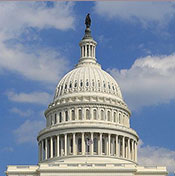
The following update is adapted from our colleagues at the Consortium of Social Science Associations (COSSA)
On Thurs, March 11th, President Biden signed into law the $1.9 trillion American Rescue Plan Act (H.R. 1319, committee report). The legislation, recently passed by Congress, aims to bring financial support to those affected by the COVID-19 pandemic through direct payments to individuals and expansion of unemployment assistance, among many other provisions. It also includes several notable provisions of interest to the science community, including $39.9 billion in funding for colleges and universities, with half to be used for student aid, as laid out in the CARES Act (see COSSA’s previous coverage). The bill also includes $100 million for the Institute of Education Sciences for research related to addressing learning loss caused by the coronavirus among K-12 students.
In addition, the National Science Foundation will receive $600 million “to fund or extend new and existing research grants, cooperative agreements, scholarships, fellowships, and apprenticeships, and related administrative expenses to prevent, prepare for, and respond to coronavirus.” While not included in the original bill text, this funding was added as part of the manager’s amendment that was passed on the House floor. This funding can only be used for research about the COVID-19 pandemic. The bill does not provide any relief for scientists whose research on other topics has been disrupted. The bipartisan RISE Act (see previous coverage), should it become law, would provide NSF with $3 billion to support non-COVID-related research impacted by the pandemic.
In the News:
- The Senate last week held confirmation votes for Marcia Fudge as HUD Secretary, Merrick Garland as Attorney General, and Michael Regan to head EPA. On Monday, Deb Haaland was confirmed as head of the Department of Interior, making her the first Native American U.S. cabinet secretary.
- On February 25, the House Committee on Science, Space, & Technology (SST) held a hearing on the COVID-19 pandemic’s impact on U.S. research and potential solutions to provide relief and recovery to the research enterprise.
- The U.S. EPA invites nominations from a diverse range of qualified candidates to be considered for appointment to its National Environmental Justice Advisory Council (NEJAC). The Agency is seeking nominations to fill approximately eight (8) new vacancies for terms through September 2022. The nomination process for NEJAC Membership is open until March 24, 2021. Click here to learn more about how to submit nominations, or email nejac [at] epa [dot] gov.
- The National Academies of Sciences, Engineering, and Medicine (NASEM) has announced the opening of the 2021 application cycle for the New Voices initiative, a two-year program giving leadership opportunities to a diverse group of mid-career experts to collaborate and develop interdisciplinary solutions to complex problems being addressed by the National Academies. The New Voices initiative is open to U.S-based scientists, engineers, health professionals, and other experts from all professional sectors including industry, academia, non-profits, and the public sector. Applications are due March 31, 2021 and are available on the NASEM website. More information about the New Voices initiative is also available on the NASEM website.
MEMBER NEWS
Profiles of Professional Geographers
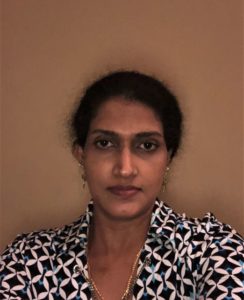
Bandana Kar, a Group Lead on the Research & Development Staff at Oak Ridge National Laboratory, brings knowledge of environmental hazards and events to address national security concerns. Kar encourages aspiring geographers to take advantage of internship opportunities in government labs similar to Oak Ridge on the path to a geography career. Searching for postings on https://www.orau.org/ is a good initial step to gaining first hand experience.
Learn more about Geography Careers on the recently updated AAG Jobs & Careers website.
RESOURCES AND OPPORTUNITIES
AAG Early Career and Department Leadership Webinar Series
In fall 2020, the American Association of Geographers piloted the Department Leadership and Early Career webinar series as a service to AAG members and the wider geography community. The series featured two separate, but equally important themes: building and growing strong academic programs, and helping students and young geographers navigate their early careers. AAG is pleased to continue this series throughout the spring, free and open to the public. Recordings of webinars held thus far are also available to watch at any time.
See upcoming webinars and view recordings.
New National Geospatial Operations Center Director Announced
The USGS is pleased to announce that David Brostuen has been selected as Director of the USGS National Geospatial Technical Operations Center (NGTOC). The NGTOC is the operational branch of the National Geospatial Program and has locations in Denver, Colorado and Rolla, Missouri. As Director of NGTOC, David leads a wide array of functions in support of maintaining seamless, current, nationally consistent coverage of base geospatial data for the Nation, including development of digital topographic maps (US Topo), the 3D Elevation Program and the National Hydrography Dataset. In addition, David oversees several broad-based USGS contract mechanisms for the acquisition of geospatial products and services through the commercial sector. David has been acting in the role of Director, NGTOC since January 2020.
Learn more.
Upcoming Virtual Events Sponsored by the Kauffman Foundation
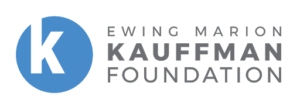 Two virtual events are upcoming that may be of interest to AAG members:
Two virtual events are upcoming that may be of interest to AAG members:
Early-Stage Researcher Professional Development Series
The next virtual Early-Stage Research Professional Development session will take place 1 p.m. CT March 26 with mentors Maria Minniti (Syracuse University) and Sharon Alvarez (University of Pittsburgh). This series is open to 15 early-stage researchers to connect with research mentors to discuss research approaches, professional development and the research career trajectory. Register.
Plain Language Training for Early-Stage Researchers
Have you ever wondered about communicating research findings to policymakers, government officials, or other stakeholders outside of your discipline? Join us 10 a.m. – 12:30 p.m. CT April 16 for a Plain Language training provided by Bold Type. In this session we will discuss what plain language is and how to apply it in translating your research findings into usable information that drives impact. Register.
2021 William T. Pecora Award Nominations Now Being Accepted
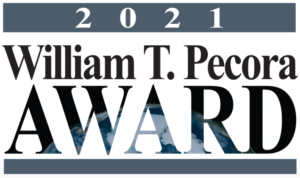 The William T. Pecora Award is presented annually to individuals or teams using satellite or aerial remote sensing that make outstanding contributions toward understanding the Earth (land, oceans and air), educating the next generation of scientists, informing decision makers or supporting natural or human-induced disaster response. Sponsored jointly by the Department of the Interior (DOI) and the National Aeronautics and Space Administration (NASA) and established in 1974, the award honors the memory of Dr. William T. Pecora, former Director of the U.S. Geological Survey and Under Secretary, Department of the Interior, whose early vision and support helped establish the Landsat satellite program. Nominations for the 2021 awards must be received by the Award Committee by May 14, 2021.
The William T. Pecora Award is presented annually to individuals or teams using satellite or aerial remote sensing that make outstanding contributions toward understanding the Earth (land, oceans and air), educating the next generation of scientists, informing decision makers or supporting natural or human-induced disaster response. Sponsored jointly by the Department of the Interior (DOI) and the National Aeronautics and Space Administration (NASA) and established in 1974, the award honors the memory of Dr. William T. Pecora, former Director of the U.S. Geological Survey and Under Secretary, Department of the Interior, whose early vision and support helped establish the Landsat satellite program. Nominations for the 2021 awards must be received by the Award Committee by May 14, 2021.
Learn more.
FEATURED ARTICLES
Visualizing Racial Equity
By Citabria Stevens
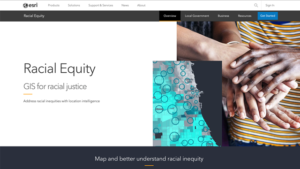
Understanding entrenched inequities and injustices is complex and figuring out what to do is a daunting endeavor. But GIS is a technology that breaks down complexities and reveals patterns over space and time, which can go a long way toward guiding action. To help scholars and policymakers leverage the full power of location intelligence to address issues that revolve around race, Esri has launched a racial equity initiative.
Continue Reading.
GEOGRAPHERS IN THE NEWS
- The Secret, Essential Geography of the Office, Wired, Feb 8
- How a Young Activist Is Helping Pope Francis Battle Climate Change, The New Yorker, Feb 8
- MapLab: How Car-Centric Street Networks Make Buses Less Efficient, Bloomberg, Feb 10
- Medical geography research shows how viruses spread UTSA Today, Feb 11
- Across the U.S., Streets Named After Martin Luther King Jr. Remain a Battleground for Equality, Dwell, Feb 12
- BBC Radio 3 – Free Thinking, Pakistan Politics, Water Supplies, BBC, Feb 16
- How Black cartographers put racism on the map of America, The Conversation, Feb 23
- Can this new map fix our distorted views of the world? New York Times, Feb 24
- How the Society of Women Geographers Changed Perceptions on Travel and Culture Travel+Leisure, March 5, 2021
- Feminist Perspective Needed in Environmental Studies to Combat Climate Crisis The Wire, March 8, 2021
EVENTS CALENDAR
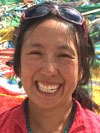
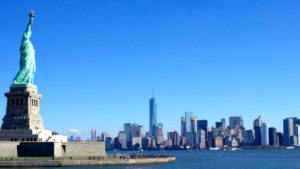
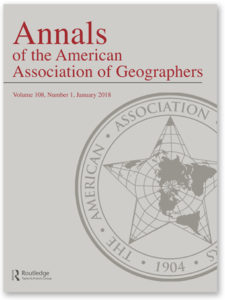
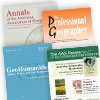 In addition to the most recently published journal, read the latest issue of the other AAG journals online:
In addition to the most recently published journal, read the latest issue of the other AAG journals online: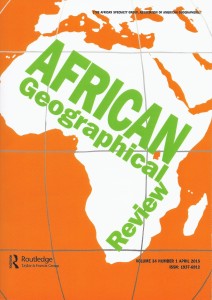 The latest issue of the journal of the Africa Specialty Group of the AAG, the African Geographical Review, has recently been published. Volume 40, Issue 2 is available online for subscribers and members of the Africa Specialty Group. The issue includes six new articles covering research in all fields of geography, including human, nature – society, physical and the techniques, to promote better representation of African scholarship, and to facilitate lively academic conversations regarding the African continent.
The latest issue of the journal of the Africa Specialty Group of the AAG, the African Geographical Review, has recently been published. Volume 40, Issue 2 is available online for subscribers and members of the Africa Specialty Group. The issue includes six new articles covering research in all fields of geography, including human, nature – society, physical and the techniques, to promote better representation of African scholarship, and to facilitate lively academic conversations regarding the African continent.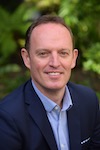

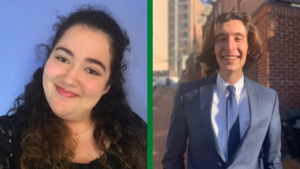 The AAG is excited to welcome two new interns coming aboard our staff for the Summer of 2021! Joining us this summer are Eliana Peretz, a senior at Mount Holyoke College pursuing a B.A. in Geography and Gender Studies, and Jacob Tafrate, a senior at the George Washington University pursuing degrees in Geography and International affairs, with a minor in Geographic Information Systems.
The AAG is excited to welcome two new interns coming aboard our staff for the Summer of 2021! Joining us this summer are Eliana Peretz, a senior at Mount Holyoke College pursuing a B.A. in Geography and Gender Studies, and Jacob Tafrate, a senior at the George Washington University pursuing degrees in Geography and International affairs, with a minor in Geographic Information Systems.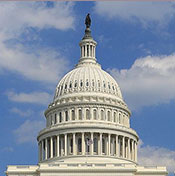
 Eliana Peretz is a senior at Mount Holyoke College pursuing a B.A. in Geography and Gender Studies. After graduation, she plans to pursue a master’s degree in her main field of interest, climate migration, specifically studying the relationship between climate-induced displacement and social and cultural categories such as class, gender, and race. In her spare time, Eliana likes to make post-it art, read murder mystery novels, and watch stand up comedy.
Eliana Peretz is a senior at Mount Holyoke College pursuing a B.A. in Geography and Gender Studies. After graduation, she plans to pursue a master’s degree in her main field of interest, climate migration, specifically studying the relationship between climate-induced displacement and social and cultural categories such as class, gender, and race. In her spare time, Eliana likes to make post-it art, read murder mystery novels, and watch stand up comedy.

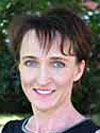
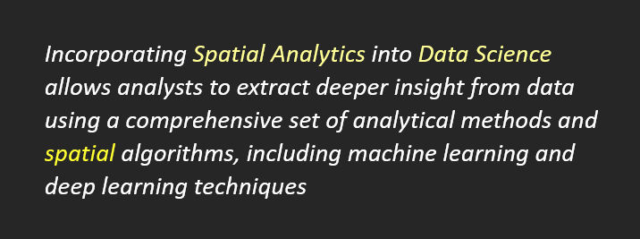
 At left is a data-driven valuation model for the housing market for King County, Washington, USA.
At left is a data-driven valuation model for the housing market for King County, Washington, USA. Looking at the map at the left, the darker green points cluster around bodies of water, and people are willing to pay more to have a house near the water body. The regression model is systematically underestimating the sale price of the houses close to water bodies. It looks as though small changes to the size of the living space may result in bigger changes to the price of a house close to a water body compared to a house that is inland. So, location matters, and in this example, incorporating spatial data is crucial in modeling and understanding the complete situation. In addition, visualizing the data on the map make it easy to observe the trend and distribution.
Looking at the map at the left, the darker green points cluster around bodies of water, and people are willing to pay more to have a house near the water body. The regression model is systematically underestimating the sale price of the houses close to water bodies. It looks as though small changes to the size of the living space may result in bigger changes to the price of a house close to a water body compared to a house that is inland. So, location matters, and in this example, incorporating spatial data is crucial in modeling and understanding the complete situation. In addition, visualizing the data on the map make it easy to observe the trend and distribution.

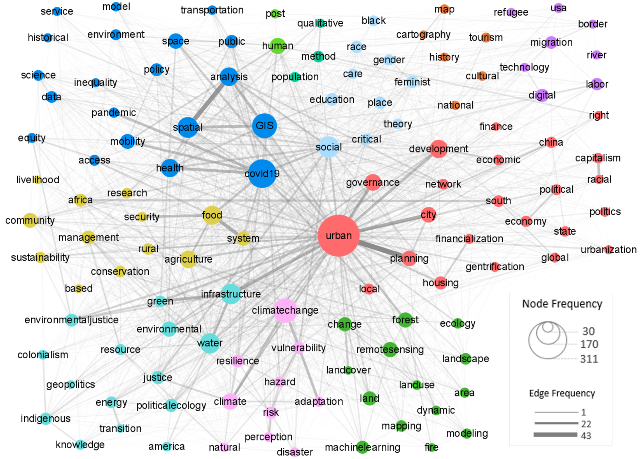

 We are about 3 weeks away from the Annual Meeting! The completely virtual 2021 Annual Meeting, April 7-11, will feature 800+ paper sessions and panels on a wide range of topics as well as 27 poster sessions. Browse the
We are about 3 weeks away from the Annual Meeting! The completely virtual 2021 Annual Meeting, April 7-11, will feature 800+ paper sessions and panels on a wide range of topics as well as 27 poster sessions. Browse the 
 The most recent issue of the Annals of the AAG has been published online (
The most recent issue of the Annals of the AAG has been published online ( In addition to the most recently published journal, read the latest issue of the other AAG journals online:
In addition to the most recently published journal, read the latest issue of the other AAG journals online:
 The 2023 Special Issue of the Annals invites new and emerging geographic scholarship situated at the crossroads of Race, Nature, and the Environment. In seeking contributions from across the discipline, we welcome submissions that advance critical geographic thinking about race and the environment from diverse perspectives and locations; that utilize a broad array of geographic data, theories, and methods; and that cultivate geographic insights that cut across time, place, and space. Abstracts of no more than 250 words should be submitted by e-mail to
The 2023 Special Issue of the Annals invites new and emerging geographic scholarship situated at the crossroads of Race, Nature, and the Environment. In seeking contributions from across the discipline, we welcome submissions that advance critical geographic thinking about race and the environment from diverse perspectives and locations; that utilize a broad array of geographic data, theories, and methods; and that cultivate geographic insights that cut across time, place, and space. Abstracts of no more than 250 words should be submitted by e-mail to 

 The AAG is pleased to announce the recipients of the three 2020 AAG Book Awards: the John Brinckerhoff Jackson Prize, the AAG Globe Book Award for Public Understanding of Geography, and the AAG Meridian Book Award for Outstanding Scholarly Work in Geography. The AAG Book Awards mark distinguished and outstanding works published by geography authors during the previous year, 2020. The AAG will confer these awards at a future event to be determined, once the travel and in-person meeting restrictions have been lifted.
The AAG is pleased to announce the recipients of the three 2020 AAG Book Awards: the John Brinckerhoff Jackson Prize, the AAG Globe Book Award for Public Understanding of Geography, and the AAG Meridian Book Award for Outstanding Scholarly Work in Geography. The AAG Book Awards mark distinguished and outstanding works published by geography authors during the previous year, 2020. The AAG will confer these awards at a future event to be determined, once the travel and in-person meeting restrictions have been lifted.

 Two virtual events are upcoming that may be of interest to AAG members:
Two virtual events are upcoming that may be of interest to AAG members: The William T. Pecora Award is presented annually to individuals or teams using satellite or aerial remote sensing that make outstanding contributions toward understanding the Earth (land, oceans and air), educating the next generation of scientists, informing decision makers or supporting natural or human-induced disaster response. Sponsored jointly by the Department of the Interior (DOI) and the National Aeronautics and Space Administration (NASA) and established in 1974, the award honors the memory of Dr. William T. Pecora, former Director of the U.S. Geological Survey and Under Secretary, Department of the Interior, whose early vision and support helped establish the Landsat satellite program. Nominations for the 2021 awards must be received by the Award Committee by May 14, 2021.
The William T. Pecora Award is presented annually to individuals or teams using satellite or aerial remote sensing that make outstanding contributions toward understanding the Earth (land, oceans and air), educating the next generation of scientists, informing decision makers or supporting natural or human-induced disaster response. Sponsored jointly by the Department of the Interior (DOI) and the National Aeronautics and Space Administration (NASA) and established in 1974, the award honors the memory of Dr. William T. Pecora, former Director of the U.S. Geological Survey and Under Secretary, Department of the Interior, whose early vision and support helped establish the Landsat satellite program. Nominations for the 2021 awards must be received by the Award Committee by May 14, 2021.
